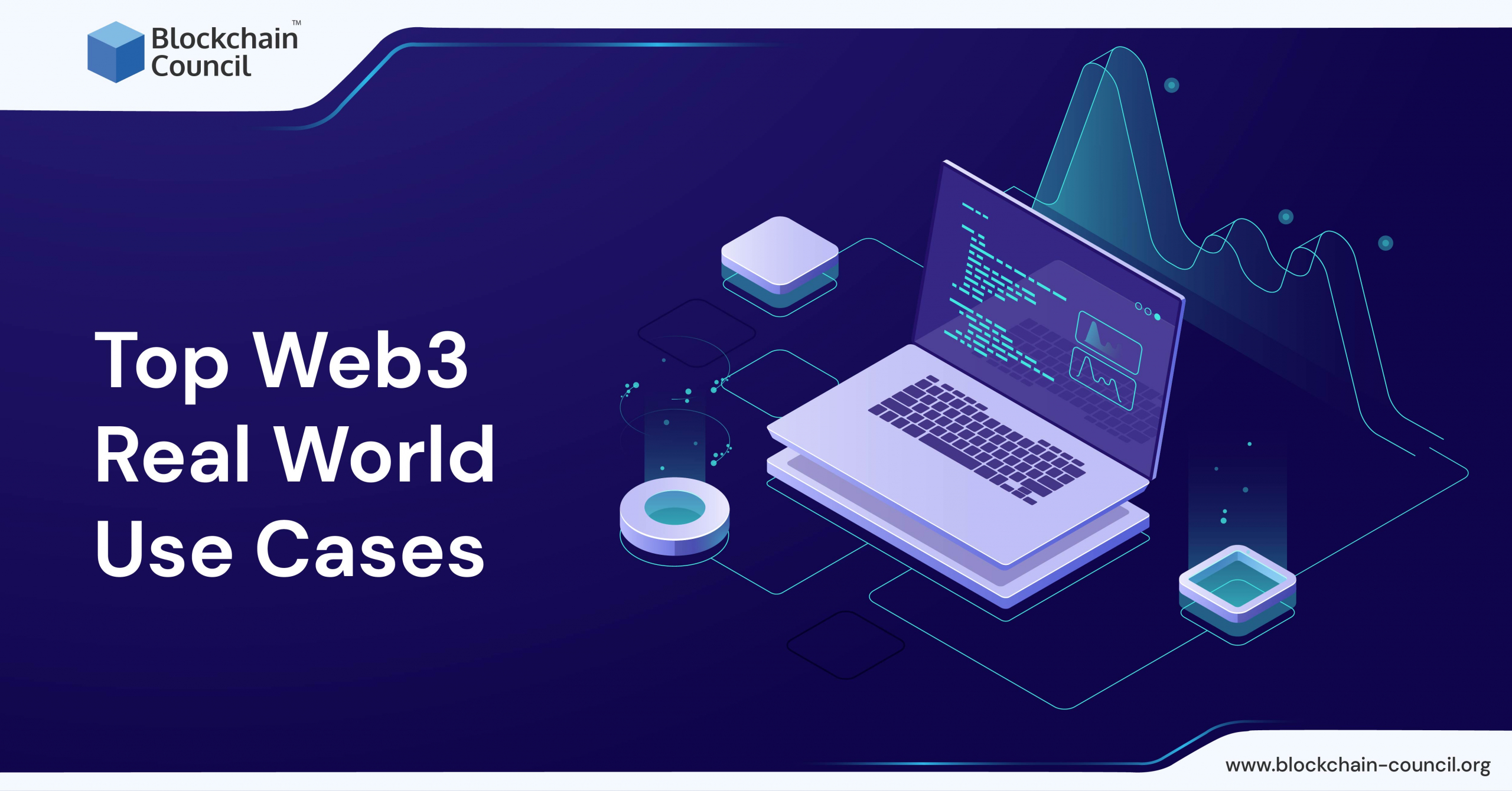
- Pradeep Aswal
- December 27, 2022
You might have come across the term decentralization of the Internet time and again, but several thoughts would have rushed the first time you heard it. Happens! Quite confused, right? Well, Let’s clarify this by explaining Web3.
Web3 is a term that describes the idea of a new and improved internet. This form of improved Internet is known to use the concept of NFTs, blockchains, cryptocurrencies, etc. so that it can return the access or ownership to the consumer itself.
Now, what’s the benefit? This will lead to a transparent system operation and, in turn, provide better security to consumers.
Many people gained access to the WWW thanks to centralization, which produced the reliable infrastructure they needed to survive.
However, as you might have noticed, the control of WWW lies within a few firms’ grip. The populace used to receive information from these centralized owners over the Internet. In essence, they resembled the internet market proprietors with complete control over everything online.
But Web3 offers a solution to this problem. Things are evolving as a result of Web3 development.
Read More- Understanding The Impact Of Web3 On The Future Of The Internet
Evolution of Web
Most people believe that the Web was created and has only been a part of modern life since that time. The Web of today, however, is considerably different from the past. Even the original internet creators themselves could not foresee how the Internet would evolve. It helps to be familiar with the Web’s recent history, which may be divided into two broad periods: Web 1.0 and Web 2.0.
Web 1.0: A one-way medium
The original version of Berners Lee’s invention is now called “Web 1.0.” This was primarily intended for static websites owned by a few corporations, and since users hardly ever created content, there was almost no user interaction. Hence, people often refer to it as the read-only Web. They were unable to discuss it or their own experiences.
Interact with the World Using Web 2.0
Social media platforms’ introduction in 2004 marked the beginning of the web 2.0 era. Now, individuals are interacting with one another, exchanging stories, and communicating with one another online. The Web developed into a read-write medium rather than a read-only one. Instead of offering users material, businesses started to offer platforms where users could exchange user-generated content and communicate with one another.
After some time, the general public learned how these large tech corporations were collecting their data and using it to produce custom adverts and marketing efforts. Facebook, in particular, has come under fire frequently for violating data privacy regulations and was recently slammed with a $5 billion fine, the highest fine the Federal Trade Commission has ever levied. The users of this web 2.0 technology were viewed as clients.
Web 3.0: Control your own online presence
As more individuals went online, a small number of leading businesses started to hold a disproportionate percentage of the traffic and value produced on the Internet. Users may generate content but don’t own it or get paid when it is made.
This sparked discussion about how the Internet might evolve, which is how the concept of Web 3.0.0 emerged. This third generation of the Internet is solely focused on reverting back the power to consumers over their sensitive information and improving transparency.
It simply refers to the upcoming version of the Internet, which supports decentralized protocols and intends to lessen reliance on major tech firms like Youtube, Netflix, and Amazon.
Unlike the previous two generations of the Internet, our Web 3.0 can perform three tasks. It can read, write and own.
The management, as well as the governance of the Web, can be carried out for users. No longer giving away data to corporations every time you sign up, visit them, etc. You own it, you keep it, as simple as that! Let’s clarify this a bit more. It’s not like you cannot share data. It’s just that you have a choice not to carry out the task anyway. If you wish to share your data, Web 3.0.0 can do it easily with the rest versions of the Internet.
These shares in Web 3.0 are referred to as tokens or cryptocurrencies, which signify ownership of the decentralized networks known as blockchains. By owing a certain number of these tokens, every consumer or visitor of the Web can influence the network.
Moreover, with these tokens in hand, you can vote on issues that you think should be resolved. Development, security, maintenance, and decentralized lending protocols related issues can be raised.
Read More- 18 Commonly Asked Web3 Interview Questions & Answers
Use Cases of Web3
Metaverse:
About the metaverse, you’ve probably heard a lot. The first thing you’ll learn about is the metaverse when looking for Web 3.0.0’s fantastic applications. But do you understand what the metaverse is in reality? Let’s talk about it.
In a nutshell, the metaverse is a three-dimensional version of the Internet that anyone may use to navigate. In essence, you will be using the Internet to conduct activities rather than watching the event on your computers’ displays.
Whether or not the metaverse will be recognized as one of the most significant use cases for Web3 will largely depend on the claims of an open, shared, and decentralized virtual environment.
Despite this, the metaverse has not yet permeated daily life, but there are hints of the technology scattered throughout a number of platforms. Numerous of the most well-known businesses in the tech and commercial industries, like Facebook, Google, Epic Games, etc., have acknowledged the benefits that the Web3 principles offer to diverse metaverse applications.
Blockchain Games:
You’ll probably choose blockchain gaming as the most noteworthy illustration of Web3 in practical use cases. The games built on blockchain technology have their own unique economies where players can actually own things that can be used in the game. When asked “What is web3 used for,” one of the most prominent answers is “to develop blockchain games,” especially when one considers the fact that blockchain games were one of the initial Web3 applications.
Decentralized Autonomous Organisations:
One of the key functionality of Web 3.0.0 is the decentralized autonomous organizations. Now, what does that mean? Well, a decentralized autonomous organization or DAO refers to an organization that doesn’t have or is not using the authority to control. These organizat ions rather prefer to run by sensible contact codes.
The main role of DAOs is to employ intelligent contracts that are capable of considering the majority of votes and making decisions that don’t involve any human interference. Coming back to the same point again will allow distributing control over all web users rather than a single person.
Decentralized Finance:
Ever got to realize the wonders Web 3.0 can do in the world of finances. If yes, let’s introduce you to Decentralized finances, often called DeFi. It is a novel idea built on the utilization of decentralized software for financial services. DeFi is a component of Web 3.0 that has gained immense popularity over the years. Defi’s benefit is the alliance of users to make a transaction without the involvement of financial institutes like banks, even the government itself. However, after realizing the potential DeFi has to offer, several companies are investing their money in it. So, imagining no such involvement from any institute can be hard but, of course, not impossible.
Creator Economy:
Although we can’t technically classify the creator economy as a web 3.0 use case, it is one of the key features of the web 3.0 environment. According to the creator economy, the rising creator communities, including musicians, artists, and developers, are directly connecting with fans and supporters. The web 3.0 principles can be relied upon by creators to engage in frictionless collaboration without intermediaries.
The use of NFTs, or non-fungible tokens, is one of the main features of the creator economy in real-world web 3.0 use cases. Due to the importance of uniqueness, the new class of digital assets has experienced an incredible surge in appeal. Additionally, high-profile NFT sales have been crucial in boosting creator economies.
One of the best web three use cases is the creator economy, which gives people who spend a lot of time online in different digital environments the chance to make money. NFTs, give creators a variety of fresh alternatives for monetization while bypassing traditional gatekeepers. Consequently, the creator economy use case of web 3.0 can provide a beneficial way for creators to market their work directly.
Cryptocurrency:
Despite being more than a decade old, it was the first decentralized digital currency. As a matter of fact, bitcoin was truly the application that raised to fame and showcased the true potential of blockchain.
Even though other cryptocurrencies and blockchain platforms, such as Solana or Ethereum, have advanced the technology as compared to bitcoin and use the concept of 3.0 better, bitcoin still matches the standard.
It is estimated that 36% of small businesses in the United States now accept Bitcoin payments, and one country has even recognized it as legal tender.
Many more countries and businesses are now accepting cryptocurrency as payment.
Privacy and Security:
Many decentralized messaging applications, like spectrum, are evolving into web3 counterparts of WhatsApp or WeChat. Web 3.0 seeks to prioritize privacy and security by allowing connections without a phone number or any email ID. The current version of Web, web 2.0, was able to identify a person as it was centralized. The owner of the server retained the information.
In addition, there are a lot of decentralized video streaming services like Dtube, where we can watch videos that interest us. Let’s take the example of YouTube. Currently, YouTube is able to recommend the videos we would prefer to watch and showcase them on our feeds. But, that won’t is the case with the 3.0 version of Web.
They also make crucial decisions on which individuals can make money from their videos and which videos can be monetized. All of this is carried out following guidelines under the site owner’s control.
However, these decentralized video streaming systems try to give consumers this control by basing all video exposure decisions on views, shares, and likes. In the conventional sense, no “owners” have the authority to control uploaded content by merely removing it from their servers.
Disadvantages of Web 3.0:
- Need to implement a privacy policy before bringing Web 3.0 to action.
- The time consumed on surfing with increased.
- Technology isn’t quite ready for it yet.
- There is a need to make more environmentally friendly technology because current technology has a much higher carbon footprint than its predecessor.
- Many laws had to be changed in order to ensure security and ownership of something.
- It can be extremely difficult for newcomers to comprehend.
- Web 1.0 sites will appear significantly more out of date.
- Web 3.0.0 will be inaccessible to less advanced devices.
Read More- What Is SocialFi? A Beginner’s Guide To The Social Network Of The Future!
Conclusion:
Summing up, we can say that Web 3.0 has dramatically changed the working and lifestyle of any user on the web platform. Starting from just reading the information on the Web to now owning the information with all the privacy and security constraints away, we have come a long way in this evolution.
Web 3.0 is a cutting-edge concept, but it needs time to develop because it is still in its infancy. Many industries have started implementing web 3.0 use cases in order to modernize their internal infrastructure and shift to the web 3.0 architecture. DAOs and the metaverse are the two prominent Web 3.0 use cases that are helping enterprises reach their full potential. With passing time and accelerating technology development, new use cases for Web 3.0 will emerge to address current business inefficiencies.
Blockchain Council offers several blockchain and cryptocurrency certification including Web 3.0 certification programs. If you want to pursue a career in Web 3.0 then check out the list of pocket-friendly certification programs available on Blockchain Council’s website.

































































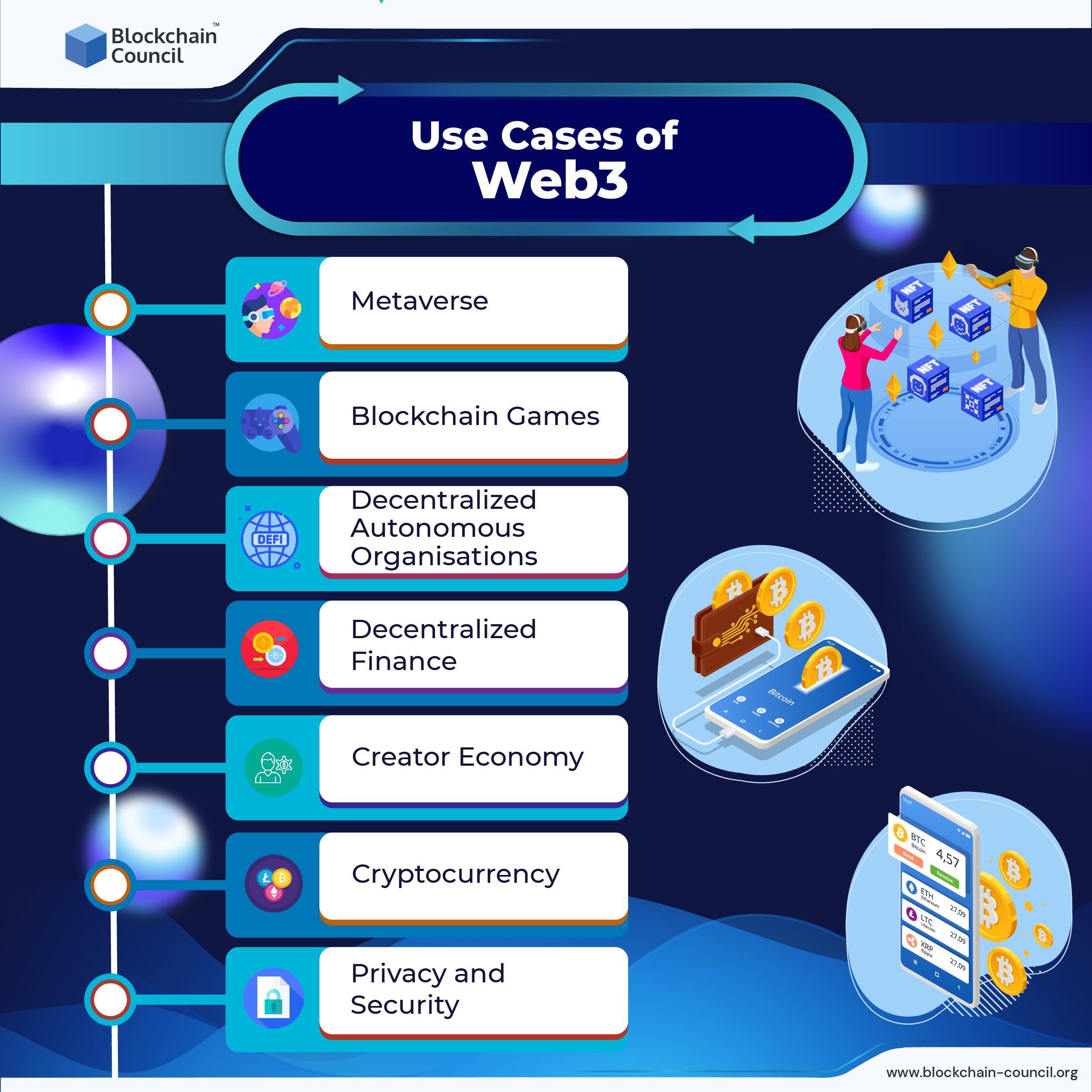
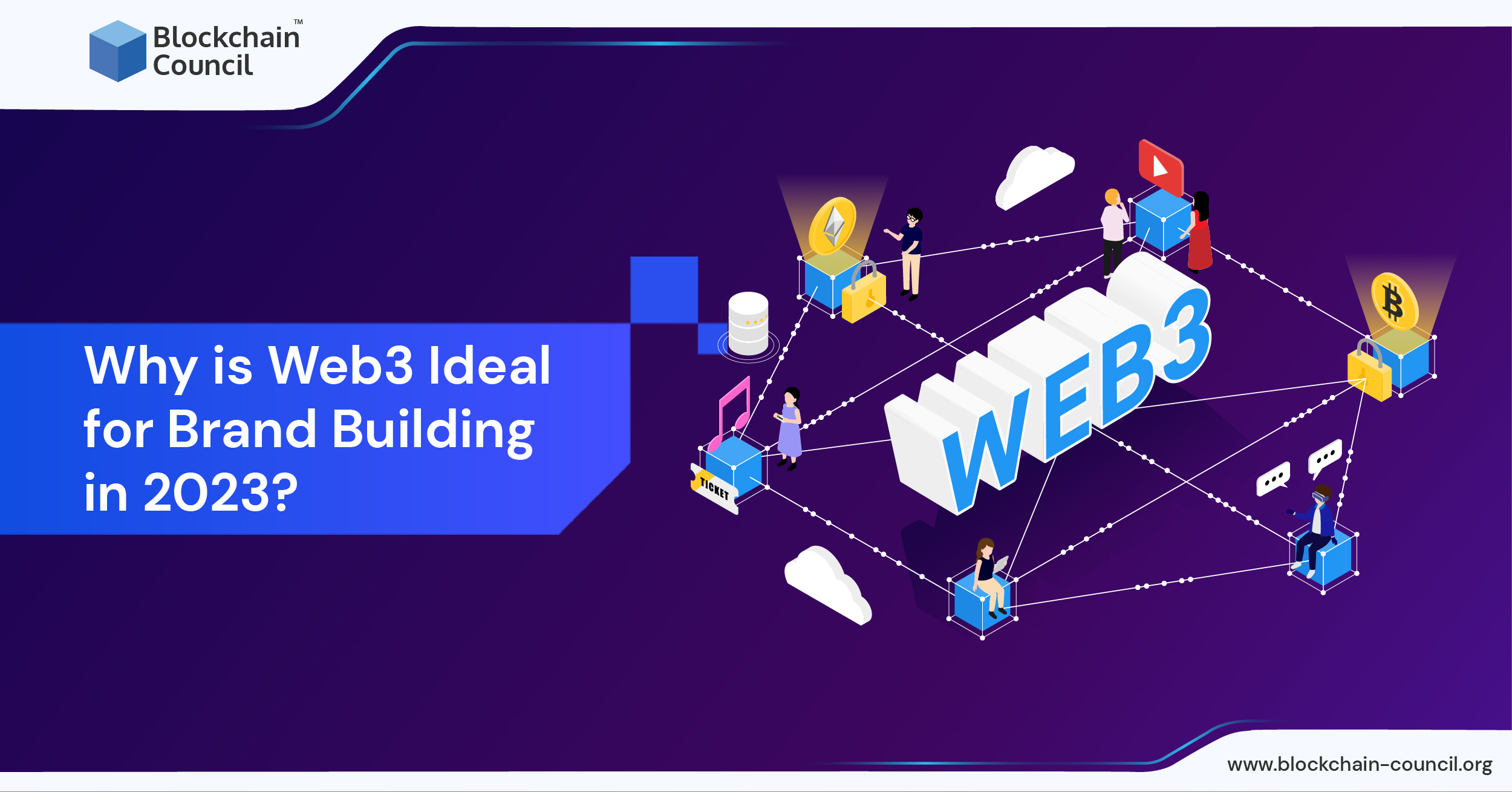
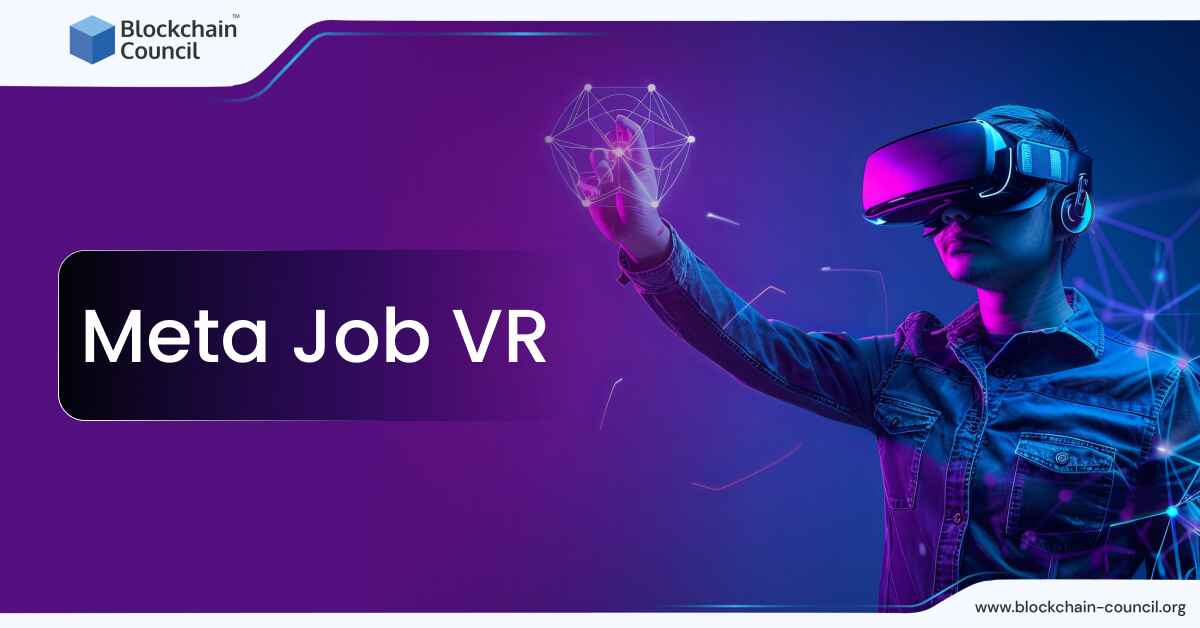
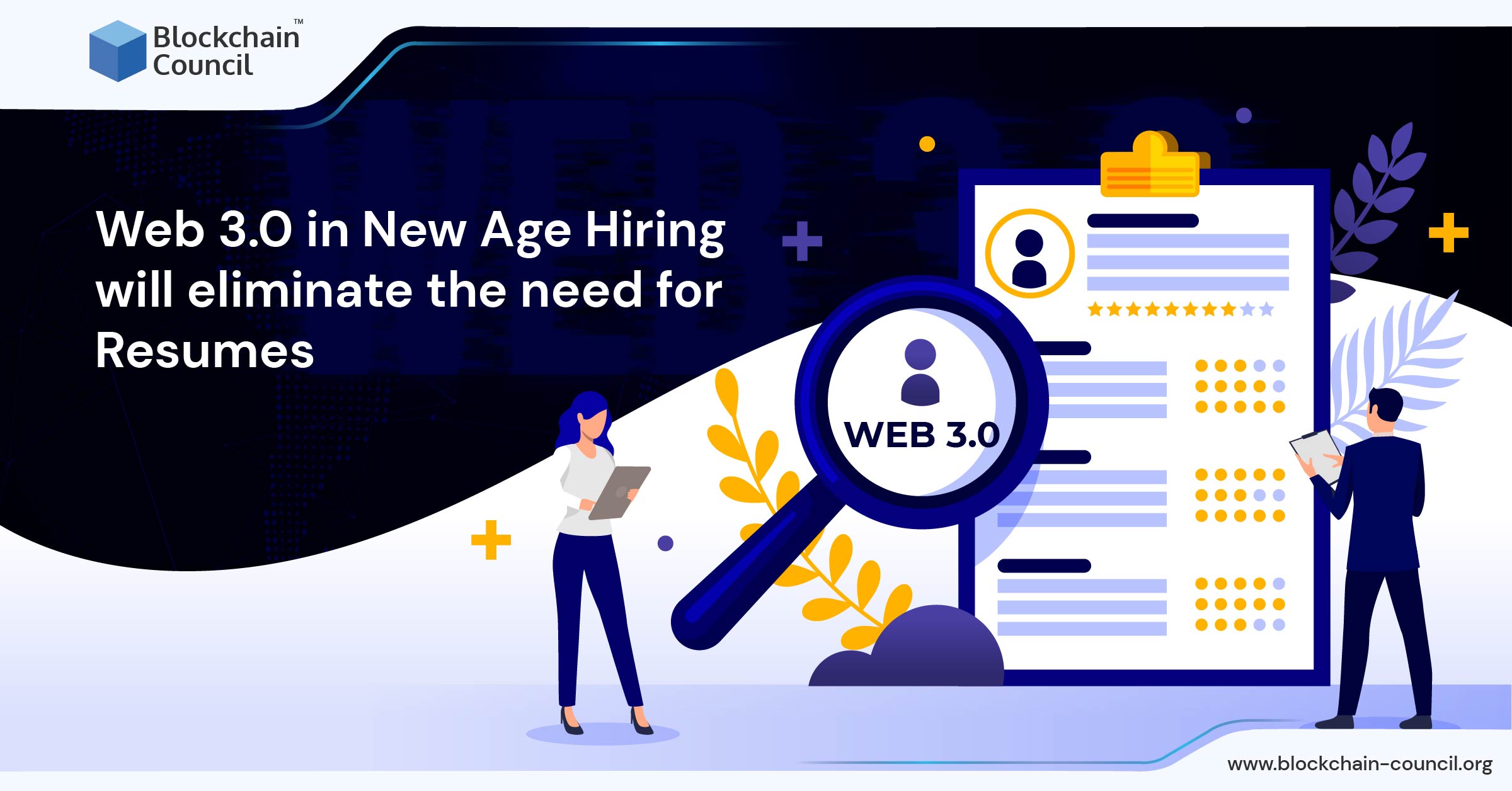
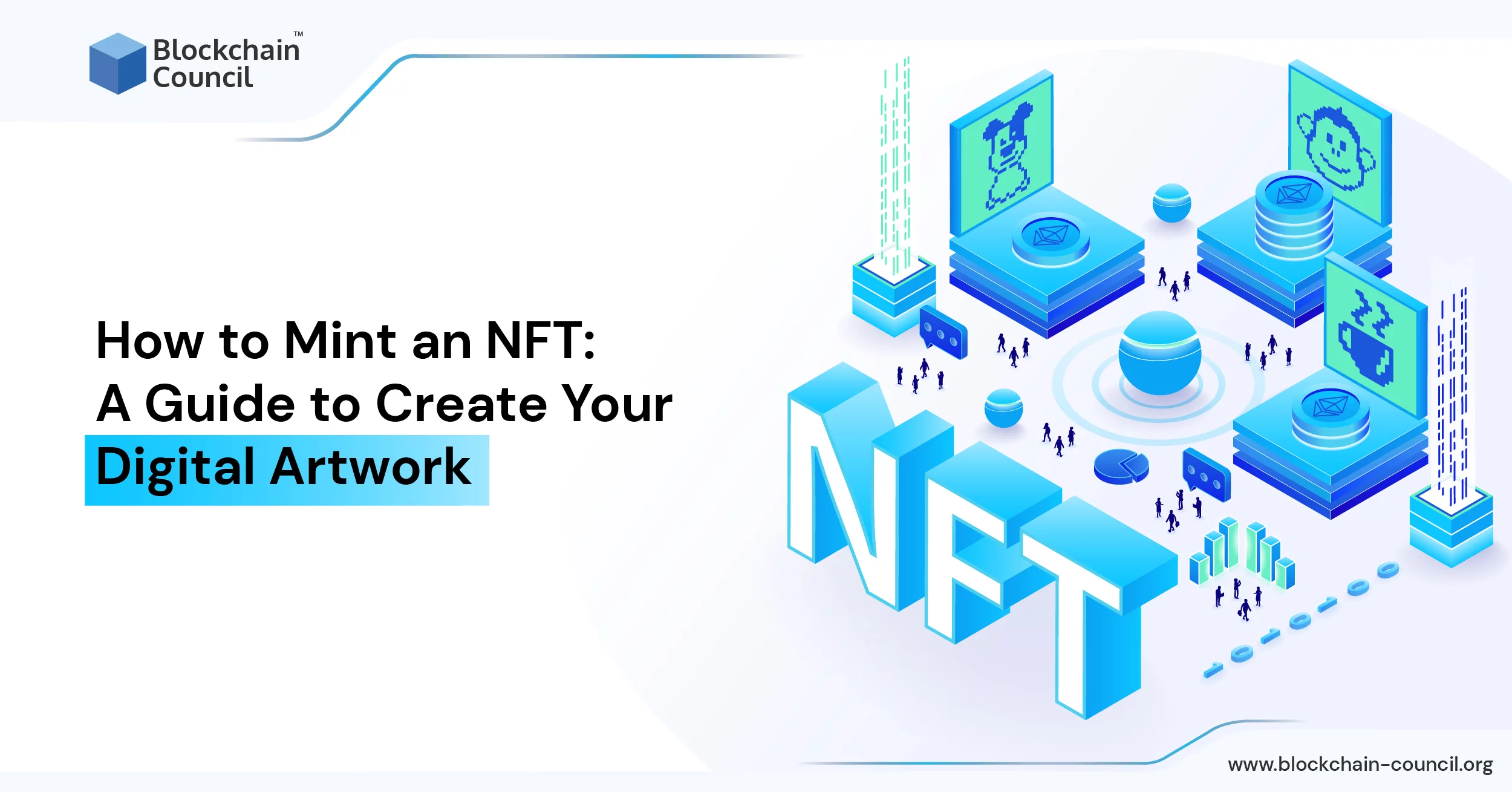
 Guides
Guides News
News Blockchain
Blockchain Cryptocurrency
& Digital Assets
Cryptocurrency
& Digital Assets Web3
Web3 Metaverse & NFTs
Metaverse & NFTs
